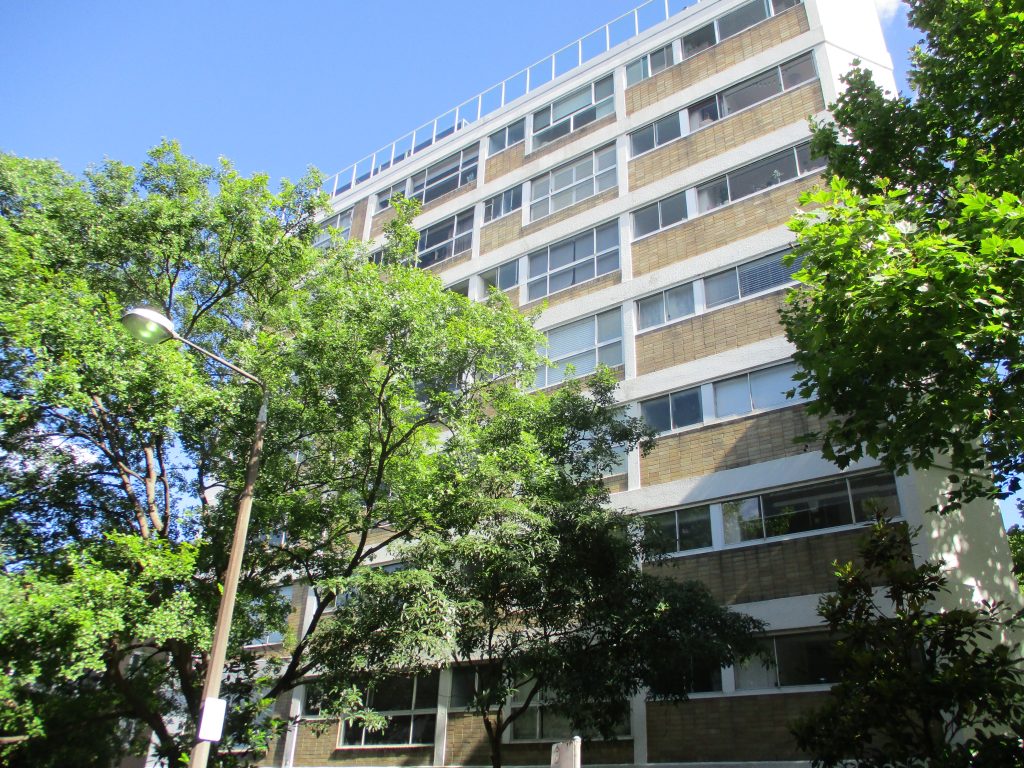OUR EUROPEAN LINKS

Australia has been a refuge and escape route for refugees ever since our first convicts arrived from UK in 1788. We still don’t know why Aboriginals first came to this continent about 50,000 years ago.
In Sydney, and more particularly in Potts Point, European architects imported their ideas which fitted naturally into our dense urban landscape.
Architects fled or were forced out of Europe in 1890s when Russia made it too difficult for Jewish designers to remain.
Aaron Bolot (1900–1989) was a Crimean architect. After migrating he contributed to and designed a number of significant buildings including flats at 17 Wylde Street (built 1951) and Ashdown, Elizabeth Bay Road.
His designs are registered with the Register of the National Estate for their significance to the history of high-rise design in Australia.
Later in the mid twentieth century, as Germany’s invasion of Poland became more imminent, the late Harry Seidler was imprisoned. Even then he was re-designing his own barracks.
He and his wife Penelope lived in one of his buildings, Ithaca Gardens (built 1969),12 Ithaca Road. Others, also part of Seidler’s ouvre, include Gemini (1969), 40 Victoria Street, International Lodge, 100 Elizabeth Bay Road and Ercildoune, 85 Elizabeth Bay Road.
Architectural critic Laura Harding says “… buildings from this modern period … [are] our potential heritage”.
Seidler was the son of a Jewish clothing manufacturer. He fled Austria to England 1938 as anti-Semitism increased and then to Canada, arriving in Australia in 1948 at the invitation of his parents.
He designed Rose Seidler house, Australia Square, the Horizon apartments and Blues Point towers among about 115 other buildings.
He won five prestigious Sulman medals and other gold medals.
He said “Modern architecture is not a style it’s a methodology of approach” adding “good design doesn’t date. Apartments are a machine for living”.
Hugo Stossel (1905-2002) is another immigrant who fled persecution. Born in Hungary and he trained as an architect in Vienna, Austria, he arrived in Sydney in 1938, aged 33, one of a number of émigré architects to arrive in Australia during the 1930s just before World War II officially broke out.
He designed Denison, 15 Wylde Street in 1966 (see image attached).
In Europe he had worked on projects such as “Buffet Automat”, a fast food chain of cafes, and in Bucharest, capital of Romania.
By 1939 he was registered as an architect in NSW and by 1945 at the end of the war he was a naturalised Australian citizen.
During the war he has worked in NSW as a project manager for Cody & Willis, a construction firm engaged mostly on government projects. He also took on some private work, including the design of Australia’s first prefabricated steel house in Ryde in 1946. He was innovative. His houses were featured in Sydney newspapers and published in well-read magazines such as “The Australian Women’s Weekly” and “Australian House & Garden”.
His St. Ursula apartment block in Onslow Avenue, Elizabeth Bay, NSW, was described as his most ‘elegant’ project, completed in 1951. It was made with reinforced concrete and a steel curtain wall with floor to ceiling steel-framed windows to celebrate harbour views.
His work ethic was prodigious and included homes, high-rise apartments, factories, resorts, hotels, government office blocks, the NSW Police HQ (now demolished) and schools.
The Chimes apartments at 40 Macleay Street nearby is another Stossel design as is 41-49 Roslyn Gardens, a dramatic landmark in its streetscape.
And at number 4 Elizabeth Bay Crescent is Murrawan Court containing 12 apartments designed by Czech Immigrant, Alexander Khan (1922-2004). The Sydney firm still exists. Unusually, the entrance is on the roof at street level with eight storeys of apartments below directly facing the water. The original 1960s cursive script name plate is still extant on the facade.
In the Elizabeth Bay loop “Oceana” was one of first modern high-rise apartment blocks in the early 1960s. It was designed by Theodore Fry (1908-1959) a Polish immigrant who fled to Australia in 1948 after fleeing the ravages of World War II.
Without their contributions our area would be very different.
By Andrew Woodhouse
Heritage Solutions





